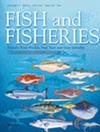Living on the Extinction Edge: Resilience to Fishing and Rebound Potential of the Mediterranean Elasmobranchs
IF 6.1
1区 农林科学
Q1 FISHERIES
引用次数: 0
Abstract
Mediterranean elasmobranchs are experiencing significant declines due to intense fishing activities, making the region a global hotspot for elasmobranch conservation concerns. These declines are worsened by limited fisheries data, constraining stock assessments and evidence‐based management. Demographic models based on life history parameters (e.g., survival rate, age‐at‐maturity, litter size and longevity) offer critical alternatives for estimating population productivity in data‐poor contexts. In this study, we estimated the intrinsic rate of population increase () for 82 stocks across 51 species of Mediterranean sharks and rays to assess their relative capacity for recovery under hypothetical sustainable exploitation scenarios. Using demographic modelling and updated life history data, we provide a comparative analysis of species‐specific productivity and identify those with the lowest recovery potential. Many IUCN‐listed threatened species exhibited very low rebound potential, highlighting their vulnerability to fishing. Significant data gaps, especially for pelagic and deep‐sea taxa, underscore the need for targeted life history research. Our results also showed how the rebound potential can provide valuable insight for data‐deficient species, supporting informed assessments with limited biological input. Furthermore, we confirmed that age‐at‐maturity is a valid proxy of when other parameters are unavailable. This study delivers a comprehensive, regional‐scale productivity baseline for Mediterranean elasmobranchs, providing essential input for prioritising species‐specific conservation actions, guiding fishery policy development and improving regional compliance with international conservation frameworks. By addressing critical data limitations, our approach enhances the scientific foundation necessary for the sustainable management and recovery of shark and ray populations in the Mediterranean Sea.生活在灭绝边缘:地中海板鳃亚纲对捕捞的恢复力和反弹潜力
由于密集的捕捞活动,地中海板鳃亚种数量正在显著减少,使该地区成为全球板鳃亚种保护关注的热点地区。渔业数据有限、存量评估受限和循证管理加剧了这种下降。基于生活史参数(如存活率、成熟年龄、产仔数和寿命)的人口统计学模型为在数据匮乏的情况下估计种群生产力提供了重要的替代方案。在这项研究中,我们估计了51种地中海鲨鱼和鳐鱼的82种种群的内在种群增长率(),以评估它们在假设的可持续开发情景下的相对恢复能力。利用人口统计学模型和更新的生活史数据,我们对物种特定生产力进行了比较分析,并确定了恢复潜力最低的物种。许多IUCN列出的濒危物种表现出非常低的反弹潜力,突出了它们对捕捞的脆弱性。重大的数据缺口,特别是在远洋和深海分类群方面,强调了有针对性的生活史研究的必要性。我们的研究结果还表明,反弹潜力如何为缺乏数据的物种提供有价值的见解,支持有限生物投入的知情评估。此外,我们证实,当其他参数不可用时,年龄-成熟-成熟是一个有效的代理。本研究为地中海板鳃类提供了一个全面的、区域尺度的生产力基线,为确定物种保护行动的优先顺序、指导渔业政策制定和提高区域对国际保护框架的遵守程度提供了重要的投入。通过解决关键的数据限制,我们的方法增强了地中海鲨鱼和鳐鱼种群可持续管理和恢复所需的科学基础。
本文章由计算机程序翻译,如有差异,请以英文原文为准。
求助全文
约1分钟内获得全文
求助全文
来源期刊

Fish and Fisheries
农林科学-渔业
CiteScore
12.80
自引率
6.00%
发文量
83
期刊介绍:
Fish and Fisheries adopts a broad, interdisciplinary approach to the subject of fish biology and fisheries. It draws contributions in the form of major synoptic papers and syntheses or meta-analyses that lay out new approaches, re-examine existing findings, methods or theory, and discuss papers and commentaries from diverse areas. Focal areas include fish palaeontology, molecular biology and ecology, genetics, biochemistry, physiology, ecology, behaviour, evolutionary studies, conservation, assessment, population dynamics, mathematical modelling, ecosystem analysis and the social, economic and policy aspects of fisheries where they are grounded in a scientific approach. A paper in Fish and Fisheries must draw upon all key elements of the existing literature on a topic, normally have a broad geographic and/or taxonomic scope, and provide general points which make it compelling to a wide range of readers whatever their geographical location. So, in short, we aim to publish articles that make syntheses of old or synoptic, long-term or spatially widespread data, introduce or consolidate fresh concepts or theory, or, in the Ghoti section, briefly justify preliminary, new synoptic ideas. Please note that authors of submissions not meeting this mandate will be directed to the appropriate primary literature.
 求助内容:
求助内容: 应助结果提醒方式:
应助结果提醒方式:


